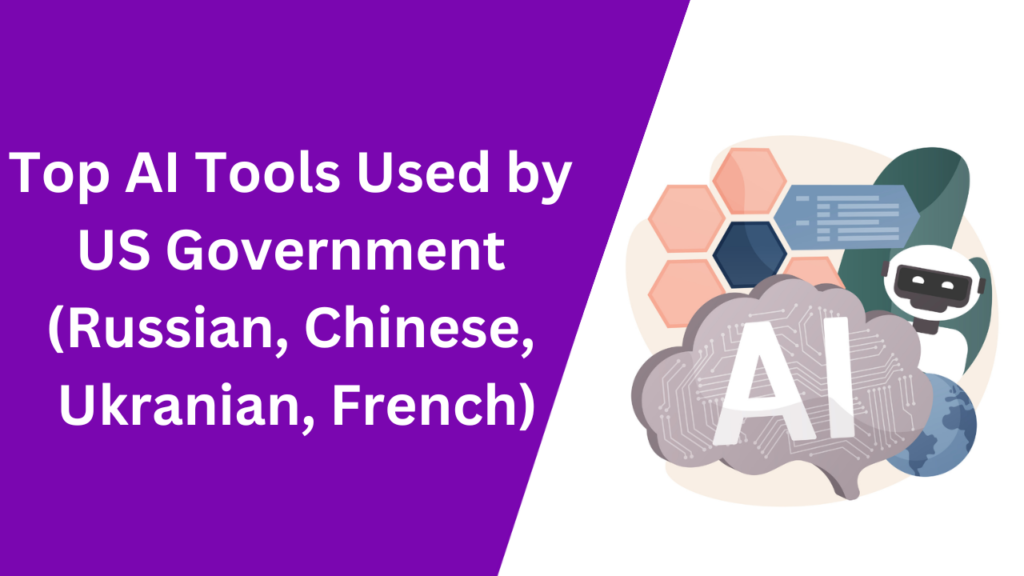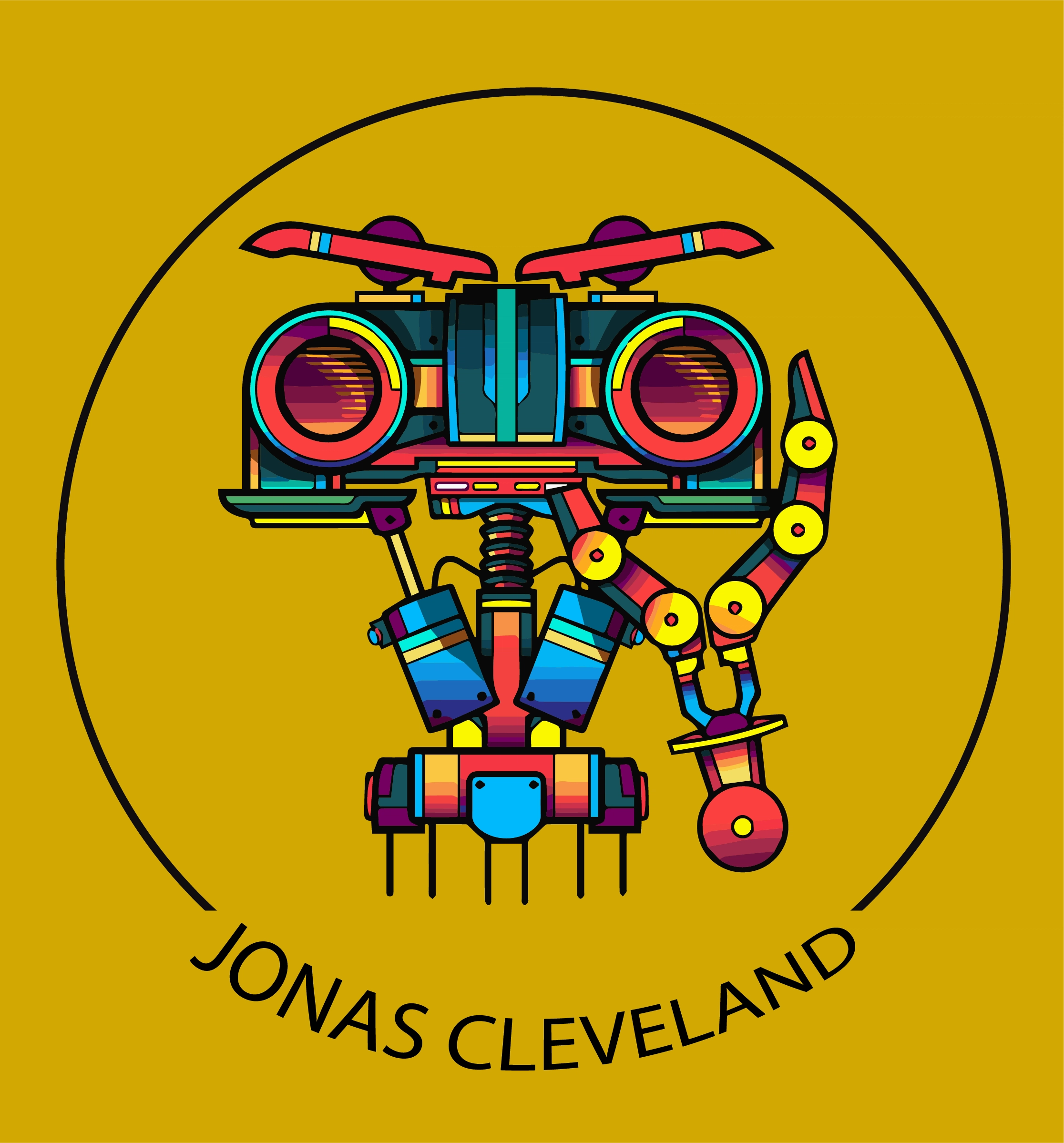Top AI Tools Utilized by Various Governments: A Global Perspective

In the modern era, the integration of artificial intelligence (AI) into governmental operations has become an essential strategy to enhance efficiency, security, and decision-making processes. From the United States to countries like Russia, China, Ukraine, and France, governments are leveraging AI tools to tackle a diverse range of challenges.Top AI Tools Utilized by Various Governments. This article delves into the AI tools adopted by these nations, offering insights into their applications and impact.The 10 Most Popular AI Poems: Best AI Poets and the Humans That Inspire Them 1: United States The United States government has been at the forefront of AI adoption, harnessing its power across various sectors. Agencies like the Department of Defense (DoD) utilize AI-driven systems to enhance cybersecurity, predictive analysis, and even autonomous vehicles. One prominent example is Project Maven, which employs AI to analyze vast amounts of imagery data for military applications. [Source: Department of Defense] 2: Russia Russia, too, has embraced AI as a tool for advancing its national interests. The country has developed AI-driven systems to enhance its military capabilities and optimize decision-making processes. The “Military Robotics” program involves AI applications in areas such as drone technology, strategic analysis, and cybersecurity. [Source: Russian Government] 3: China China’s rapid advancement in AI technology is evident in its government’s initiatives. The “New Generation Artificial Intelligence Development Plan” outlines the country’s ambition to become a world leader in AI by 2030. China employs AI in surveillance, social credit scoring, and public health management. The use of AI-powered facial recognition systems for public security is a notable application. [Source: State Council of China] 4: Ukraine Ukraine has also recognized the potential of AI in shaping its future. The country is leveraging AI to enhance its cybersecurity measures, detect fake news, and optimize energy consumption. The “Strategy for the Development of Artificial Intelligence in Ukraine” outlines plans to establish AI research centers and integrate AI into public services. [Source: Ukrainian Government] 5: France France is actively investing in AI technology to bolster its economic growth and innovation. The French government launched the “France IA” initiative, aiming to position the nation as a leader in AI research. AI tools are used in healthcare, transportation, and urban planning. For instance, the “Paris Smart City” project incorporates AI to optimize traffic management and reduce energy consumption. [Source: France IA] AI in Use by the Australian Government The Australian Federal Government knows the advantages of AI and has various plans in motion, as detailed in the Australia’s Artificial Intelligence Action Plan. The CSIRO has also created an AI Road Map for the Australian Government, covering areas like Natural Resources, Health, Aging, Cities, and Infrastructure. In industries, AI is central to the Government’s Modern Manufacturing Strategy, aiming to enhance business competition, raise employment, build scalable systems, and strengthen supply chains. AI is reshaping Australia via collaborations with businesses, schools, and government agencies. Examples include: 1: Clean Energy: Synengo, an engineering firm, creates ‘digital copies’ of existing structures, aiding government and businesses to assess decisions and save energy costs. 2: Conservation: The Government teams with BirdLife Australia to rescue the Eastern Bristlebird post Black Summer fires. AI listens to unique bird calls to locate them. 3: Emergency Services: The CSIRO’s Spark predicts bushfires using various data, available for government agencies, emergency services, and researchers. 4: Environment: AI merges with Indigenous knowledge for Kakadu National Park management, solving tough issues and conserving species. 5: Infrastructure: Transport for NSW partners with Sydney University to standardize road safety ratings, saving time and maintenance efforts. 6: Medicine: Coviu trials AI for remote physiotherapy, freeing up hospital beds. 7: Recycling: The University of Sydney and partners use AI to sort soft plastics, preserving their recyclability. 8: Surgery: Project Sagasu detects brain aneurysms quickly, aiding early diagnosis. 9: Utilities: VAPAR uses AI to grade pipe damage, boosting defect identification by 15%. Examples of AI Tools in Governmental Use 1: Predictive Policing: Several governments, including the US, employ AI algorithms to predict crime hotspots and optimize police deployment, aiming to reduce crime rates.Top 15 AI Generated Songs in 2023 2: Healthcare Decision Support: AI-powered systems aid healthcare professionals in diagnosing diseases, analyzing medical images, and predicting disease outbreaks, as demonstrated in the US and China. 3: Natural Language Processing: Governments use AI to analyze vast amounts of textual data, aiding in sentiment analysis, identifying trends, and understanding public opinion. 4: Crisis Management: AI tools are utilized for disaster response and crisis management. For instance, AI-driven simulations help predict the impact of natural disasters and plan responses accordingly. Bottom Line: In conclusion, the integration of AI tools into governmental functions has transformed the way nations approach challenges and opportunities. From defense to public services, AI is playing a pivotal role in enhancing efficiency, security, and innovation across the globe.
Most Impressive Projects Coded by AI

Artificial Intelligence (AI) projects offer exciting opportunities for learning and innovation. Whether you’re a beginner or looking for advanced challenges, here’s a curated list of 20 Most Impressive Projects Coded by AI, categorized by skill level. Beginner Level AI Projects Product Recommendation Systems Create algorithms that suggest products based on user preferences, enhancing customer experience for platforms like e-commerce sites. Plagiarism Analyzer Develop a tool to detect plagiarism in text content, aiding authors and organizations in maintaining originality. Prediction of Bird Species Build models to classify bird species based on images, demonstrating AI’s image recognition capabilities. Dog and Cat Classification Create a model to differentiate between images of dogs and cats, gaining insights into image classification techniques. Next Word Prediction Develop algorithms that predict the next word while typing, making text input on small devices more efficient. Intermediate Level AI Projects Face Recognition Construct systems that identify faces in images and videos, showcasing the potential of AI in biometric security. Mask Detection Implement AI to detect individuals wearing masks, contributing to safety protocols in public spaces. Heart Disease Prediction Build an application that predicts cardiac diseases, offering online medical advice based on user data. CV Analysis Develop a tool for ranking job applicants’ CVs, enhancing the recruitment process with AI-driven analysis. Sales Predictor Create algorithms to forecast product sales, aiding businesses in inventory management and planning. Advanced Level AI Projects Human Pose Estimation Build models to estimate body poses from images, applicable in fields like gaming and fitness. 5 Best AI Code Generators You Must Try Here are some exciting AI-powered code generators. Let us take a look at them: 1: GitHub Copilot GitHub Copilot, developed by GitHub in collaboration with OpenAI, marks a new era of AI-powered programming assistance. It acts as a virtual coding partner, aiding developers in writing improved code quickly. As you type, it suggests entire lines or blocks of code. This tool has been trained on public code repositories, granting it the ability to understand various programming languages and styles. But GitHub Copilot goes beyond copying existing code. It adapts and learns from each developer’s unique style, leading to more personalized and accurate suggestions over time. This makes it a powerful companion in the coding journey. 2: Cody by Sourcegraph Cody, from Sourcegraph, is another AI-driven coding assistant that goes beyond simple code completion. It offers automated code reviews and identifies potential bugs in the code, making it a valuable asset for developers. Cody shines in understanding the context of the code, providing meaningful suggestions and reviews. This leads to enhanced code quality and less time spent debugging, making coding more efficient. Top 15 AI Generated Songs in 2023 3: TabNine TabNine, by Codota, stands out as a robust AI code assistant. Using machine learning, it predicts and suggests code completions, aiming to speed up coding while minimizing errors. Impressively, TabNine works with over 20 programming languages and integrates seamlessly with various code editors, making it versatile across platforms. 4: Replit GhostWriter Replit GhostWriter, a product of Replit, is another impactful AI coding assistant. It aids programmers by completing code in real-time as they type, reducing time spent on boilerplate code and syntax errors. What sets GhostWriter apart is its seamless integration with the Replit online code editor, allowing coding, running, and debugging all in one place. 5: Mutable AI MutableAI stands out as a potent coding assistant, specifically designed to transform design files into functional front-end code. Its unique feature bridges the gap between designers and developers, making the process of creating websites from designs more streamlined. In summary, these AI-powered coding assistants are transforming how developers work, from offering personalized suggestions to bridging design and development gaps. 20 Best AI Art Generators Final Thoughts! As you embark on these projects, consider using popular tools and frameworks like Scikit Learn, TensorFlow, and Python to facilitate development. Remember, the journey of learning AI is ongoing. These projects will not only enhance your skills but also prepare you for a rewarding career in the evolving field of artificial intelligence. Keep exploring, learning, and creating!
10 Amazing Floorplans Created by AI: A New Era of Smart Spaces

In the world of architecture, new technologies are helping us create spaces that are both functional and beautiful. Artificial Intelligence (AI) is playing a big role in this, especially when it comes to designing floorplans. AI can help architects come up with innovative and efficient layouts for homes, offices, and more. Amazing Floorplans Created by AI, showcasing the power of technology in shaping our living and working spaces. 1: Cozy Cottage Retreat AI can create warm and inviting spaces, like this cottage floorplan. It maximizes the use of space, making the living area and kitchen feel open and connected. The bedroom tucked away ensures a peaceful sleep. 2: Urban Studio Haven This compact studio apartment shows how AI can optimize limited space. With a foldable bed and clever storage solutions, it’s perfect for city dwellers who want comfort without compromising on style. 3: Family-Friendly Residence AI understands the needs of families, as seen in this layout. The living room is spacious, and bedrooms are well-separated for privacy. A dedicated play area shows that AI considers every family member. 4: Efficient Workspace Working from home is made easy with this AI-generated floorplan. It provides a designated office space with ample natural light, keeping work and relaxation areas separate. 5: Luxury Villa Design AI can also create grand designs, like this luxurious villa. With its sprawling layout, majestic staircase, and well-organized rooms, it’s a testament to how AI can blend opulence with practicality.Preparing Large Image Datasets: A Comprehensive Guide 6: Eco-Friendly Dwelling This eco-conscious home is designed to make the most of renewable energy sources. AI optimized the placement of windows and solar panels, ensuring maximum energy efficiency. 7: Open Concept Wonder Modern aesthetics come alive in this open concept layout. AI encourages fluid movement between the kitchen, dining, and living areas, making it perfect for social gatherings. 8: Rural Serenity For those who crave a tranquil life, this rural farmhouse layout fits the bill. AI ensured a balance between communal spaces and private retreats, all while embracing the surrounding nature. 9: Multi-Generational Harmony AI understands the importance of multi-generational living. This floorplan offers separate living spaces under one roof, allowing families to live together while maintaining individuality. 10: Compact Urban Townhouse In urban settings, space is at a premium. This AI-designed townhouse maximizes vertical space, with multiple levels offering privacy and comfort without sacrificing the urban lifestyle. Examples from Famous Architects Famous architects are also harnessing the potential of AI to create impressive floorplans: What is Object Tracking in Computer Vision? A Detailed View 1: Frank Lloyd Wright AI Edition An AI-powered tribute to Frank Lloyd Wright produced a stunning floorplan that incorporates his signature organic architecture style, seamlessly blending nature with design. 2: Zaha Hadid Inspired AI Design Channeling the spirit of the late Zaha Hadid, AI generated a futuristic floorplan characterized by fluid lines and unconventional spaces, paying homage to her groundbreaking architectural vision. Best AI Floorplans Generators Now, let us explore a few AI floorplans generators. Here are a few of them: 1: PlanFinder AI Introducing PlanFinder AI, a groundbreaking plugin for architects, engineers, and designers. It speeds up apartment floor plan creation using artificial intelligence. With just a few clicks, architects can generate, fit, and furnish spaces. This tool saves precious time and resources by streamlining planning tasks. PlanFinder’s strength lies in its simplicity. It employs advanced algorithms and machine learning to swiftly analyze parameters and create layout options. From open living spaces to fitting in multiple bedrooms, PlanFinder delivers solutions in seconds. It also enables experimenting with furniture and decor placement. 2: qbiq.ai qbiq.ai is transforming real estate. Their AI-powered software swiftly crafts custom office layouts. This efficiency empowers agents and property managers to close deals faster. This technology sets a new standard, simplifying the process of locating and leasing commercial spaces. 3: Getfloorplan.com Getfloorplan.com is a boon for real estate agents, architects, and designers. It offers easy creation of 2D, 3D floor plans, and 360 virtual tours. With a user-friendly interface, anyone can elevate their listings. The offered materials are top-tier, capable of transforming ordinary listings into extraordinary ones. The software features drag-and-drop tools, measurements, and color customization, making personalization a breeze. 4: Cove.tools Cove.tools is your go-to for user-friendly 3D modeling software. It’s brimming with features to create stunning designs. Whether you’re a seasoned pro or a beginner, Cove.tools has you covered. A standout feature is its AI-powered assembly tool, Assemble. It allows for quick creation of intricate models by snapping together different parts and components. 5: OPAL.AI OPAL.AI introduces a game-changing feature. Now, users can instantly generate AutoCAD, Revit, and BIM floor plans using their smartphones. This innovation caters to both commercial and residential spaces. Expensive equipment and manual measurements are no longer needed. An iPhone or iPad with a camera is all that’s required for OPAL.AI’s floor plan generator. Conclusion AI is ushering in a new era of architectural innovation by offering unique, efficient, and thoughtful floorplan designs. From cozy cottages to luxurious villas, these examples demonstrate the versatility of AI in catering to diverse lifestyles and needs. With the collaboration of AI and human creativity, the possibilities for the future of architecture are endless.
